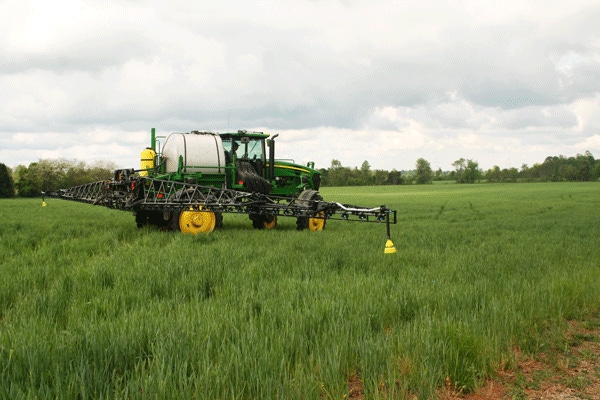March 8, 2011

A tough winter in the upper Southeast, with an unprecedented amount of snow and ice, has left many growers wondering whether their wheat crop will be worth carrying through the spring.
Fortunately Southeastern wheat growers don’t have a lot of experience in judging the viability of winter damage, because there hasn’t been a recent winter on record with so many fronts bringing snow and ice to the region.
In mid-February, the Carolinas and Virginia braced for their fourth significant snow storm, with the first coming on Christmas Eve and Christmas Day. While the snow and ice may create havocs for most living things in the Southeast, wheat may be one exception.
Wheat is an important crop in the upper Southeast, but Kansas is the heart of U.S. wheat country. The state is expected to produce more than one-fifth the total U.S. production in 2011. While Southeast wheat growers don’t have a lot of experience dealing with the effects of snow and ice on wheat, long-time Kansas State University Agronomist Jim Shroyer does.
Shroyer says growers shouldn’t be too quick to make the decision to kill their wheat crop.
The Kansas State scientist has seen his share of wheat crops in the Midwest. This year, with prices so high, farmers need to be more cautious than ever when deciding whether to keep or abandon their wheat crop, he says.
“Don’t get in too big of a hurry to destroy the wheat crop this year. If we get moisture, it can fool you. And, even if it does make a poor crop, it’s still going to be worth $8-$9 per bushel,” Stroyer stresses.
“Simple math will tell a grower $8 a bushel wheat, even at ultra low yields of 15-20 bushels per acre, may be better than the next crop they plant,” Shroyer says. “Back when wheat was selling for $4 a bushel, keeping a low yield potential crop wasn’t such a hard decision to make,” he adds.
Eight dollars a bushel may not be high enough for wheat. In mid-February red winter wheat was selling in Norfolk, Va., for $8.86 a bushel. With wheat stocks at historic lows, prices aren’t likely to come down.
“Wheat has to be really poor to not get 15-20 bushels out of it. Still there is some wheat that just didn’t come up and there is no yield potential, but those acres are going to be the exception in most years,” Shroyer says.
Moisture will make big difference
What growers need to remember is that any kind moisture, including snow melt will give the root system of wheat a big boost. So, what looks like very little tillering may turn out to be better than 15-20 bushel per acre wheat, he says.
If the grower makes the decision to not apply nitrogen and generally wait and see whether they have enough tillers to make a crop, they have essentially made the decision to lose some money. At $8-$9 a bushel that could be significant money.
A better approach may be to put out 50 — up to 80 — percent of their normal side-dress. If the grower decides to take the wheat out, they still get some benefit from the fertilizer. If the wheat is truly bad, it’s not going to use much of it, so most of fertilizer will be in the soil or in the crop residue, if they destroy the wheat.
Shroyer says jokingly, just because you kill a poor crop doesn’t mean it’s going to rain. Without the rain, the next crop isn’t going to do too well either. So, in many cases it may be better to stick with what you’ve got.
Top-dressing on a thin stand of wheat will be a major issue wheat growers will face this year. “I can understand the grower’s perspective of not throwing good money after bad. However, if they follow that line of thinking, they will have made the decision to lose $8-$9 a bushel wheat, plus the cost they already have in the crop,” he says.
In the Carolina and Virginia, wheat acres are expected to be up some from 2009, which was a disaster for the crop in the upper Southeast. Nationwide wheat acres are up by about 10 percent and prices continue to soar in 2011. Winter wheat seeded area for 2011 is expected to total 41 million acres, up 10 percent from 2010.
Approximate wheat class and acreage breakdowns are: red winter, 29.6 million; soft red winter, 7.76 million; and white winter, 3.66 million.
Taking a wait-and-see attitude isn’t usually a good thing in farming, but in the case of wheat in the winter of 2011, it may be a good course of action.
About the Author(s)
You May Also Like






